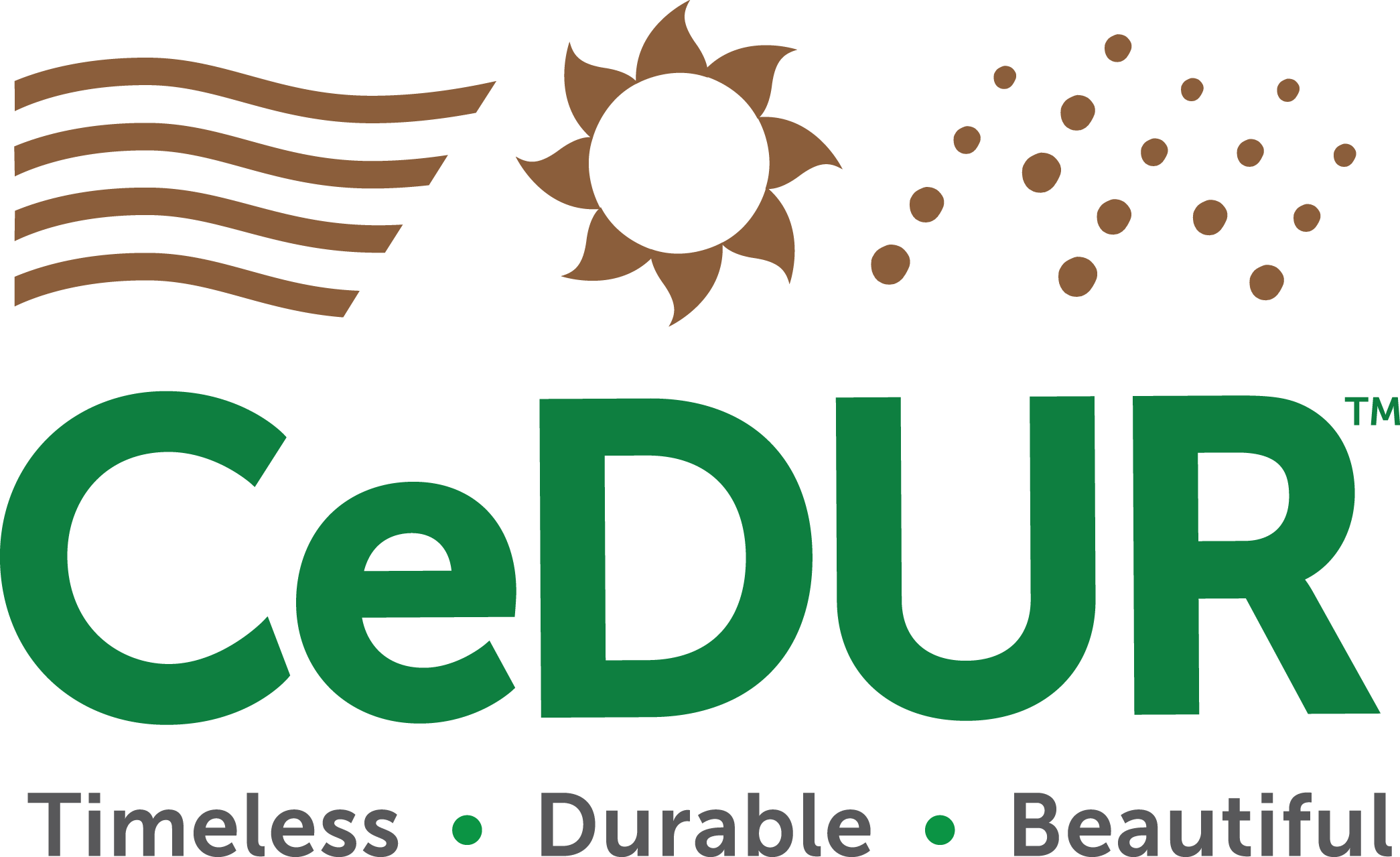Types of Roof Shingles: From Traditional Materials to Modern Alternatives
CeDUR Walden roof featuring realistic wood-grain texture and snow guards for mountain durability.
When it comes to choosing the right roofing material, homeowners today have more options than ever before. From timeless elegance and rustic charm to sleek modern durability, the roofing shingles you choose will greatly influence your home’s appearance, performance, and long-term value.
In this guide, we explore the most popular types of roof shingles—both traditional and modern—and offer insights into how they perform in different environments, how they look, and what makes each one unique.
Why Roof Shingle Type Matters
Your roof is more than just protection from the elements. It’s a key architectural feature that affects curb appeal, energy efficiency, maintenance requirements, and property value. Choosing the right type of shingle means balancing durability, cost, aesthetics, and performance in your specific climate.
Traditional Roof Shingle Types
Before diving into modern materials, let’s take a look at the time-tested shingle options that have been used for decades.
Asphalt Shingles
A dormer window adds charm and light beneath durable gray asphalt shingles.
Asphalt shingles are the most common roofing material in North America thanks to their affordability and ease of installation. There are several varieties including 3-tab, architectural, and premium designer shingles. They come in a wide range of colors and typically last 15–30 years.
While budget-friendly, they may not hold up as well in extreme climates or offer the distinctive look some homeowners desire.
Wood Shingles and Shakes
Crafted from cedar, redwood, or pine, wood shingles and shakes provide a warm, rustic aesthetic that blends well with natural surroundings. Shingles are machine-cut for a smooth look, while shakes are hand-split for a more rugged appearance.
They offer decent insulation value but require regular maintenance and are vulnerable to rot, insects, and fire (unless specially treated).
Slate Shingles
Gray slate roof showcasing a uniform, natural stone texture for a classic architectural look.
Slate is a natural stone with unmatched longevity—some slate roofs last over a century. It offers a distinctive, upscale appearance and resists fire, mold, and weather extremes.
However, slate is extremely heavy and expensive to install. It also requires a reinforced roof structure and skilled craftsmanship.
Modern Roofing Shingle Alternatives
Before we dive into the latest roofing innovations, it's worth highlighting the impressive strides modern materials have made in combining performance with aesthetic appeal.
Metal Shingles
Sleek standing seam metal roof offers modern style and weather resistance.
Modern metal shingles are designed to mimic the look of wood shake, slate, or tile while offering superior durability and snow-shedding capabilities. They are lightweight, fire-resistant, and highly recyclable.
While more expensive upfront, metal shingles can last 40–70 years and perform exceptionally well in cold or snowy climates.
Clay and Concrete Tiles
Popular in southwestern and Mediterranean-style homes, clay and concrete tiles are known for their durability and insulation. While not technically shingles, they often compete in the same category.
They resist fire and insects but are heavy and may crack in freeze-thaw cycles. Like slate, installation requires a strong roofing structure.
Synthetic and Composite Shingles or Shakes
A CeDUR Shiloh roof in Canada showcases the beauty of wood shakes with the strength of modern materials.
These shingles are crafted from advanced materials like polymer blends, polyurethane, or rubber composites and are engineered to replicate the look of natural materials such as cedar, slate, or tile. They merge the classic beauty of traditional roofing with the reliability and efficiency of modern manufacturing.
CeDUR synthetic shakes are a premier choice in this category. Crafted from high-density polyurethane, they emulate the rich texture and deep grain of real cedar, providing curb appeal without the headaches of ongoing upkeep. CeDUR shakes deliver Class A fire resistance, Class 4 impact resistance, and exceptional freeze-thaw durability—making them ideal for regions with harsh weather conditions.
Their realistic appearance, superior performance, and low maintenance requirements make them one of the most compelling roofing options on the market today for homeowners seeking beauty without compromise.
Roof Shingle Styles and Aesthetics
Shingles vary in more than just material—they differ in shape, texture, color, and profile. From the rustic charm of hand-split shakes to the sleek dimension of architectural asphalt, there’s a style to suit every home.
CeDUR, for instance, captures the handcrafted feel of real wood with deep shadow lines and varied textures, elevating the overall appearance of any exterior design.
Choosing the Right Shingles for Your Climate
Your region’s climate plays a big role in what materials will perform best long-term. Certain shingle types are better suited to extreme weather, while others thrive in more temperate conditions. Here’s a quick breakdown of ideal materials by region:
Cold/Snowy Regions: Metal, synthetic (like CeDUR), and slate offer superior performance in freezing temperatures and snow load.
Hot/Dry Climates: Clay, concrete, and metal resist UV degradation and retain less heat.
Humid or Rainy Areas: Composite and treated wood offer better moisture resistance.
High-Wind Zones: Impact-rated synthetic, metal, and high-quality asphalt—paired with proper underlayment—deliver strength and resilience.
Finding the Best Shingles for Your Home
From traditional wood and asphalt to innovative synthetics and recycled materials, the types of roofing shingles available today offer something for every style, budget, and performance need.
For homeowners seeking a blend of elegance, strength, and low maintenance, CeDUR synthetic shakes deliver a standout solution. They offer the look of natural wood with unmatched performance benefits, making them one of the best modern alternatives on the market.
Looking to upgrade your roof? Explore CeDUR’s synthetic shake options to find a style that elevates your home’s curb appeal while offering long-term peace of mind.
Contact our team today to get expert guidance or request a personalized quote.





